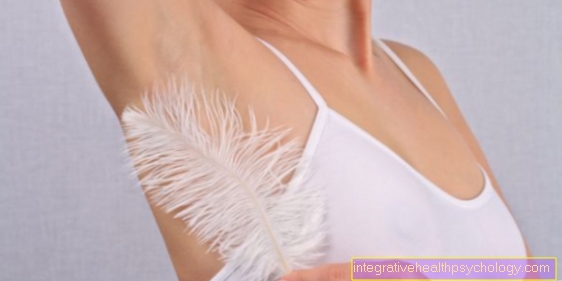White teeth
introduction
White teeth, who doesn't want them, because the expression of a face is mainly determined by the eyes and the teeth. Teeth become visible when speaking and laughing. If they are dark, it is not a pretty sight. But you can do something about it. The method is called bleaching or English bleaching. However, professional bleaching has no therapeutic or prophylactic use, but is requested at the patient's request for aesthetic reasons alone. Therefore, it is not paid for by the statutory health insurance, but is considered private treatment.
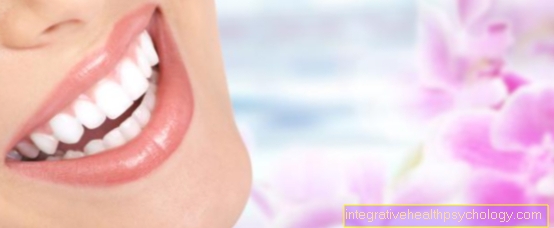
Tooth discoloration
There are two types of tooth discoloration. Teeth that are colored like pulp-dead teeth, i.e. teeth from which the pulp has been removed or the teeth become darker with age, which is a completely normal process. Some also want their teeth, which are naturally yellowish or have a gray tinge, to be lightened because they appear too dark.
The second form of tooth discoloration is the result of staining deposits on the surface of the teeth. This can be the result of tea, coffee, red wine or even tar residues in smokers. Cigar and pipe smokers are particularly affected by this. Certain medications also discolour the surface of the tooth. It is, for example, the antiseptic chlorhexidine digluconate or some antibiotics.
How do you get white teeth?
Appearances are becoming more and more important in today's society. Because of this, many people wonder how exactly they can get white teeth. Since the cause of the appearance of yellow or grayish discolored teeth are in most cases based on wrong living habits, just changing these habits can help to get white teeth.
In addition to the genetic predisposition, the regular consumption of tobacco products and coloring foods such as black tea, coffee or red wine play a decisive role in the development of external tooth discoloration. People who have strong discoloration of the tooth surface should therefore reduce or stop consuming nicotine and / or coloring foods.
The best results are usually achieved through professional teeth cleaning and subsequent bleaching in the dentist's office. They use professional products and techniques to reliably remove discoloration and keep teeth white. However, professional teeth whitening at the dentist is usually expensive. When applied professionally, bleaching does not pose a health risk to the patient.
You can find more about bleaching at: White teeth due to bleaching
Nevertheless, many of those affected are wondering how to get white teeth in an inexpensive and gentle way. Even with simple home remedies, the tooth color can be lightened by several tones, giving the teeth a healthier appearance. While many of these home remedies can actually help remove mild stains from your teeth, it is important to note that home remedies can cause extreme damage to the surface of the teeth.
The most popular home remedies for white teeth include lemon, strawberry juice and commercial baking soda. Another way of getting whiter teeth is to use so-called "tooth whitening toothpastes". However, these toothpastes cannot really whiten the tooth surface. Rather, the abrasive particles contained in these toothpastes ensure that dirt particles are removed and the natural tooth color is restored. However, these abrasive particles also remove parts of the tooth enamel and thus damage the tooth structure. Therefore caution is advised with frequent use.
You can find more on this topic in the main article: How do you get white teeth?
White teeth from whitening
The so-called ’bleaching’ at the dentist describes the whitening of teeth through e.g. Substances containing hydrogen peroxide. The teeth can be lightened by 2 to 8 shade levels depending on your wishes and needs. In general, bleaching works in a similar way to hair bleaching at the hairdresser's. Different techniques can be used depending on the reason for the whitening. One distinguishes the so-called Walking bleach technique, the Home whitening and the Office whitening. The first technique is used on teeth that have been treated with root canals. The dentist puts the bleach into the already opened tooth. It takes a few days for the desired result to be achieved. The tooth is temporarily closed. The Home whitening is carried out using an individually manufactured splint filled with bleach, which the patient can wear at home for several applications. The latter technique is performed in the dental office. In general, one should abandon the bleaching sets available in the drugstore. The risk of tooth and soft tissue damage is very high.
You can find more information here: Whitening - Which Method is Best?
White teeth from hydrogen peroxide
Hydrogen peroxide is one of the most well-known agents for whitening teeth and thereby thoroughly removing discoloration. In the application, the hydrogen peroxide is mixed in equal parts with lukewarm water and used as a daily mouth rinse. It is very important not to swallow the conditioner under any circumstances. Vomiting and burns can occur. In the dental practice, hydrogen peroxide is mostly used as a bleaching agent for professional teeth whitening. However, this is usually very concentrated. For this reason, special protective measures are taken for the gums in order to avoid consequential damage.
Before using it on its own, you must speak to a dentist to ensure that it is used correctly and safely.
Side effects
Treatment with highly concentrated hydrogen peroxide can cause burns to the mucous membrane if it comes into contact with the substance. Therefore careful coverage is necessary. After the treatment, there may be sensations of pain in the teeth, but these will quickly subside. The enamel can also be attacked, it can lose calcium. A final treatment with fluoride is therefore necessary to support remineralization. Carious teeth may only be whitened after the renovation. (see also: Caries)
White teeth from the use of mouthwashes
Mouthwashes are often offered in advertising or drugstores that are supposed to help whiter teeth. In general, however, these mouthwashes have very aggressive ingredients in order to achieve the desired and promised effect. On the contrary, the ingredients in mouthwashes, etc. Chlorhexidine can have the opposite effect. If used continuously and too often, this can stain teeth brown instead of making them whiter. Mouthwashes in general are suitable for supportive oral hygiene and not for whitening teeth.
Products in the dental practice
If one wishes to have teeth whitening treatment, it is always better to have this done in a dental practice. Even the removal of superficial tooth discoloration is best done by professional teeth cleaning, either with a powder jet device or rotating instruments such as small brushes or rubber cups that, together with an abrasive paste, remove the deposits safely and gently. The treatment is completed with a fluoride application
Thorough restoration and cleaning of the teeth also precedes treatment with hydrogen peroxide. The dentist works with more highly concentrated pastes or gels. That is why it is important to thoroughly cover the gums before applying the products. After application, the substance is activated with light, releasing oxygen and allowing it to develop its bleaching effect. At the end of the treatment, it is rinsed off thoroughly with water. This treatment takes a long time, but is completed with one session. The success of the treatment can be measured by making a comparison before and after the treatment. A color ring or a color scale is used for this purpose, which otherwise serves to match the tooth color of the plastic teeth to that of the remaining teeth when making a prosthesis. These colored rings do not contain totally white teeth because nature has given us teeth that are slightly yellowish.
Another method for white teeth is to whiten teeth with dead pulp. With them, the tooth is darkly discolored by blood in the dentinal tubules. Here the dentist can whiten the tooth from the inside out by opening the tooth into the pulp chamber with an insert containing hydrogen peroxide. The deposit must lie for a few days.
Products for home use
For home use, pharmacies or drugstores offer over-the-counter products for white teeth and the removal of discoloration. Certain toothpastes (see also: Dental care) are used to remove deposits on the tooth surface. They either have a high level of abrasiveness due to aggressive cleaning agents or they only bleach the pigments. Due to the aggressive cleaning agents, these special toothpastes should only be used at greater intervals, as they can otherwise damage the tooth enamel. You have to give the enamel time to recover. The bleaching effect is achieved by hydrogen peroxide, but only in a significantly lower concentration.
More about this topic can be found: White teeth from toothpaste
In addition to toothpastes, products are also available that can be applied as gel or strips. They also contain hydrogen peroxide in low doses, which removes the discoloration from the enamel. Because of the low dosage, the application must be repeated several times for really white teeth. However, the effect does not last very long, so it is necessary to repeat it after approx. 1 year. If plastic fillings are present, especially in the anterior region, these are not included in the whitening effect. This also applies to plastic crowns. In addition, it must be ensured that the gums do not come into contact with the lightening substances in order to avoid damage to the mucous membrane. A splint made by the dentist, which the patient fills with the active product and wears for several hours, also helps to avoid damage. This application must also be repeated several times.
In addition to the usual tooth whiteners, so-called whitening pens can also be used. With the help of such a pencil, the tooth color can be lightened by a few tones. When using bleaching pens, you need a little patience and a sure instinct, as each tooth is coated individually and the gel has to harden without contact with the lips. However, if the gel has hardened after 30 seconds, the handling is more pleasant than e.g. for whitening strips.
Read more on the topic: White teeth through home remedies
White teeth from toothpaste
There are many different toothpastes on the market that advertise can make your teeth whiter by using the toothpaste on a daily basis. However, caution should be exercised with some of the toothpastes. They can contain ingredients that damage tooth enamel over the long term. They have an abrasive effect and can remove discoloration or deposits. As a result, the teeth are initially whiter, but the tooth enamel is subsequently abraded. The teeth become increasingly sensitive to pain and also yellower, as the yellowish dentin underneath shimmers through from time to time.
Read more on this topic at: White teeth from toothpaste
Toothpaste with turmeric
Another home remedy for teeth whitening is the spice turmeric. The turmeric root comes from the ginger family and is actually known for its yellow coloration in foods such as rice. You can chew a piece of raw turmeric root, which is available in many organic shops or in supermarkets, for several minutes or create a paste with turmeric powder and water with which you can brush your teeth. The teeth will initially turn yellow during use. Subsequent rinsing with sufficient water is therefore very important. Turmeric is considered a remedy for inflammation and swelling in the mouth and for this reason is also often used as a supplement to traditional periodontal therapy. It should also have an antibacterial effect and consequently improve dental health. Occasional chewing of the turmeric root can therefore be worthwhile to prevent diseases such as inflammation or swelling of the oral cavity.
Toothpaste with banana peel
To whiten the teeth, you only need the peel of the banana. This contains a lot of potassium and magnesium. These should lead to a natural whitening effect. With this application you rub the inside of the banana peel over your teeth for a few minutes. Then let the coating created by the banana peel act for about 10 minutes. You should be careful not to remove it from your teeth with your lips. After the ten minutes have elapsed, the teeth can be brushed normally with the usual toothpaste. The process can be repeated every few weeks.
Toothpaste with activated charcoal
Many of the toothpastes recommended for teeth whitening contain the black ingredient activated charcoal. The advantage of toothpaste containing activated charcoal is the gentle cleaning of the tooth surfaces. There is no risk of damage to the tooth enamel due to the lack of emery particles. In this way, the black toothpaste can gently remove discoloration and deposits. In addition to incompatibilities, there are no concerns with this toothpaste. The use of this toothpaste is exactly the same as with any other toothpaste. In order to prevent discoloration of the gums, it is very important to rinse the mouth thoroughly with water.
Read more on this topic at: Toothpaste with activated charcoal
White teeth from coconut oil
Coconut oil is one of the well-known home remedies for whitening teeth. The advantage of this compared to many other home remedies is that the coconut oil does not attack tooth enamel and gums. On the contrary, the oil is said to have antioxidant and anti-inflammatory (= anti-inflammatory) properties. The best thing to do in the morning on an empty stomach is to put a tablespoon of coconut oil in your mouth and start rinsing it with the oil. You pull the oil through your teeth and keep it moving for about 15 minutes. It is very important not to swallow the oil. The oil then emulsifies to form a whitish liquid, which can then be discarded in a paper towel to avoid clogging the drain. In order to subsequently remove the usually unpleasant taste of oil, you should brush your teeth normally. Coconut oil is a very good choice for whitening your own teeth. The application must be carried out more than 1 time to achieve an effect.
Read more on the topic: White teeth from coconut oil
White teeth from oil pulling
Oil pulling is a method used to whiten teeth. Furthermore, the oil available in every household is one of the very successful natural accompanying therapies in the treatment of periodontitis or gingivitis. Antioxidant and anti-inflammatory (= anti-inflammatory) properties are ascribed to the oil. The best thing to do in the morning on an empty stomach is to put a tablespoon of oil (e.g. cold-pressed sunflower oil or coconut oil) in your mouth and start rinsing it with the oil. You pull the oil through your teeth (= oil pulling) and keep it moving for about 15 minutes. It is very important not to swallow the oil. The oil then emulsifies to form a whitish liquid, which can then be discarded in a paper towel to avoid clogging the drain. You can then brush your teeth to get rid of the unpleasant taste.
White teeth thanks to healing clay
Healing earth is a home remedy that includes recommended for teeth whitening. It can also be used to protect sensitive teeth. The minerals contained in the healing clay can strengthen the tooth. It is possible to mix healing clay into a paste to whiten your teeth and then use it like normal toothpaste. Furthermore, the healing earth is now also available ready-made as a toothpaste. The advantage of the healing earth is the low purchase price as well as the harmlessness with regard to possible tooth enamel damage.
What measures are used to attack the tooth enamel?
There are very many methods and means of whitening your own teeth and removing discoloration or plaque. However, many of these agents are not entirely harmless to tooth enamel and also to the gums. These enamel damaging agents do not necessarily have to be artificially manufactured products from the pharmacy or drugstore. Well-known home remedies for teeth whitening can also be very damaging to tooth enamel.
These harmful home remedies include citric acid and baking soda in particular. The caustic effect of citric acid and the abrasive effect of the baking powder remove impurities and the teeth appear whiter, but the tooth enamel is seriously damaged by the abrasive effect. As a result, the teeth can appear yellowish in the long run, as the underlying dentine shimmers through. Furthermore, the teeth become significantly more sensitive to pain. Furthermore, there are various toothpastes whose ingredients or particles can also "grind" the teeth and thereby damage the tooth enamel. Advice on choosing the right toothpaste is recommended.
Home remedies
People who suffer from severe tooth discoloration no longer necessarily have to resort to expensive bleaching procedures that can only be carried out in the dental practice. Above all, the influence that these whiteners have on both the structure and the health of the tooth surface ensures that many people prefer to use supposedly gentler home remedies.
Although many of the well-known home remedies are actually able to remove slight discoloration from the tooth surface, they do not ensure really white teeth for every user.
Lemon juice in particular is one of the most popular home remedies for white teeth. Regularly brushing your teeth with lemon juice is said to be an effective way of whitening the tooth surface. However, when using this home remedy, it is important to note that lemon juice is a natural acid. Acidic products attack and roughen the tooth surface.
The enamel is weakened and the smallest niches of dirt arise. Because of this, regular use of lemon juice can even lead to irreparable damage to tooth enamel. Brushing your teeth with lemon juice is not recommended, especially in connection with the grinding tools in toothpastes.
In addition, commercial baking soda is one of the home remedies for white teeth that should be viewed as rather questionable. While regular use of baking soda can actually whiten teeth, the side effects of this home remedy should not be underestimated. The whitening of the tooth surface when using baking soda takes place via a grinding (abrasive) mechanism.
In addition, strawberries and / or strawberry extract can help to effectively lighten the tooth surface. The fruit must be processed into a viscous paste before use and then applied to the tooth surface. After an exposure time of about five to ten minutes, the home remedy can be removed with an ordinary toothbrush and toothpaste.
But this home remedy also carries risks that should not be underestimated. The reason for this is the fact that strawberries also have natural acids that have a negative effect on tooth enamel. In addition, when using strawberry paste, there is a risk that the small seeds of the fruit will get under the gumline, settle there and lead to the development of inflammatory processes. In addition, the red fruit itself has a large number of color particles that can cause new discoloration.
You can find more on this topic on the main page: White teeth through home remedies
baking powder
Commercially available baking powder has been a miracle cure for white teeth for decades. The effect of the baking powder is mainly based on the ingredient sodium hydrogen carbonate (short: baking soda). This particular ingredient can also be found in most of the commercially available tooth whitening toothpastes. Before the actual application, the baking powder must be mixed with a little tap water. The resulting foam formation activates the cleaning effect of the baking powder. The teeth can then be brushed with the baking powder. The direct contact between the tooth surface and baking soda ensures that superficial discoloration is removed. With the regular use of baking powder, however, it must be noted that this not only leads to white teeth, but also removes parts of the tooth enamel. For this reason, regular use of baking soda can cause permanent damage to tooth enamel. In addition, the particles of baking soda cause severe irritation of the gums due to friction. As a result, users can often see receding gums.
You can find more about baking powder at: White teeth from baking soda
Summary
A certain degree of whitening of the teeth is possible with products containing hydrogen peroxide, both at home and through professional treatment. Certain precautionary measures must be taken so that there is no damage to the mucous membrane. The treatments must be repeated at longer intervals, but not more than twice a year.
Since home remedies can cause massive damage to the tooth surface, their use is generally not recommended. The lightening effect is not guaranteed and the tooth enamel can be damaged by the acids and abrasives.

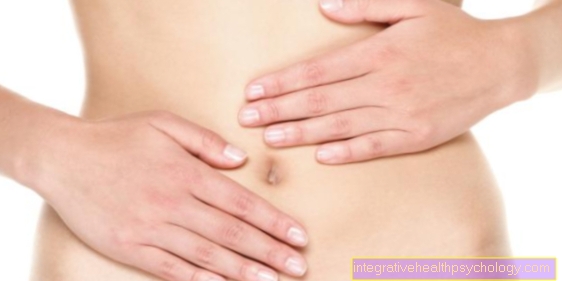




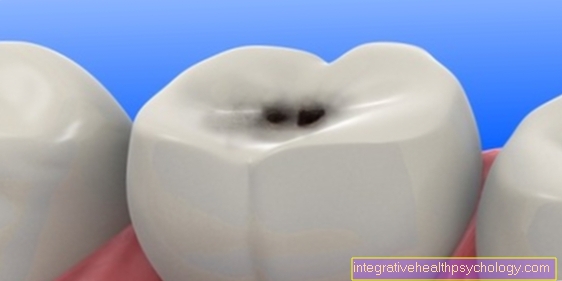





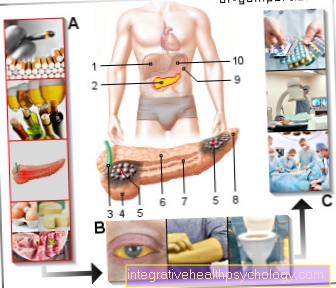

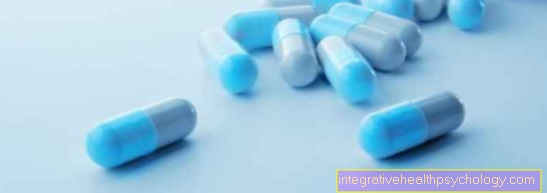




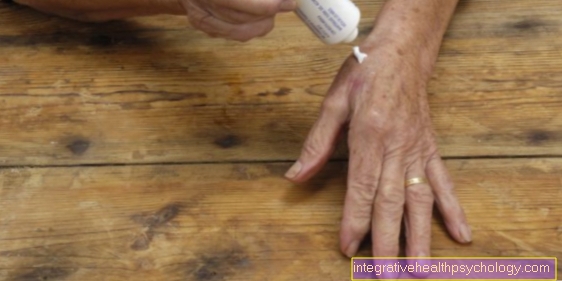



.jpg)



